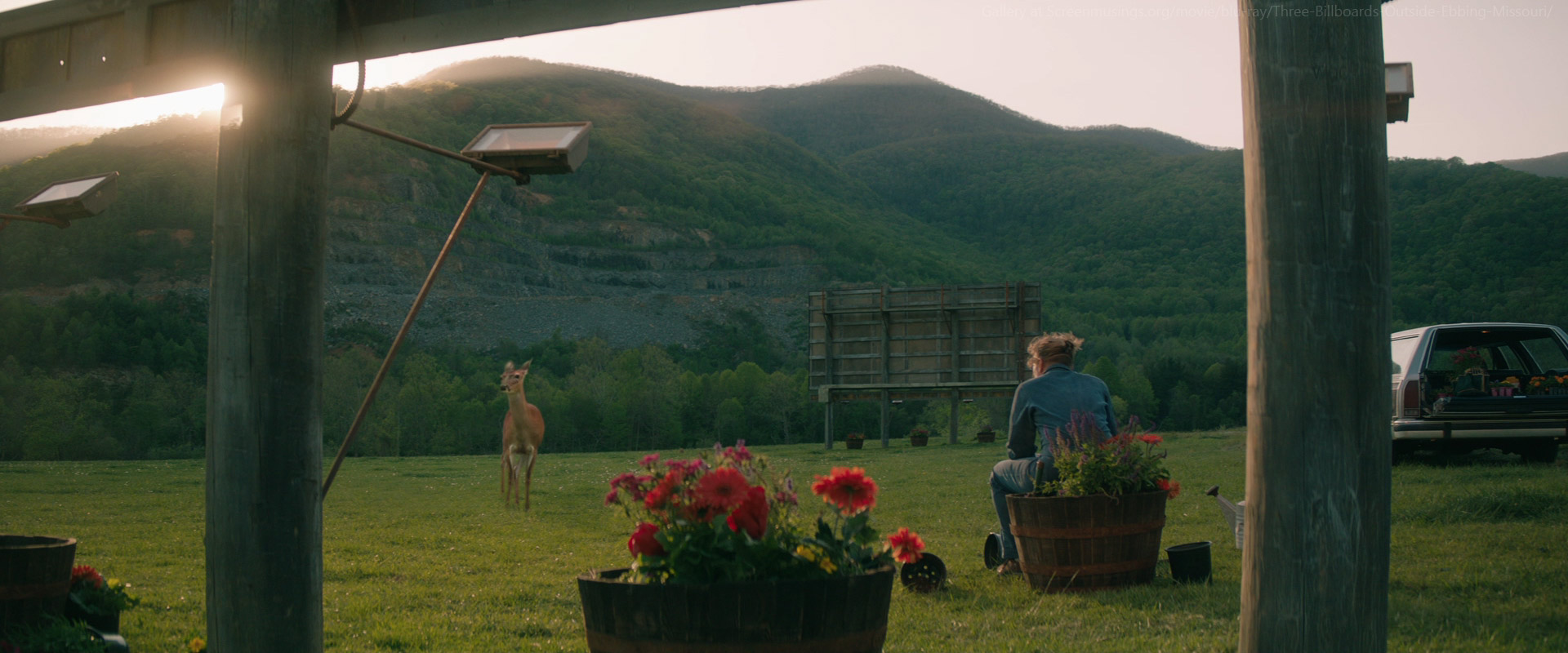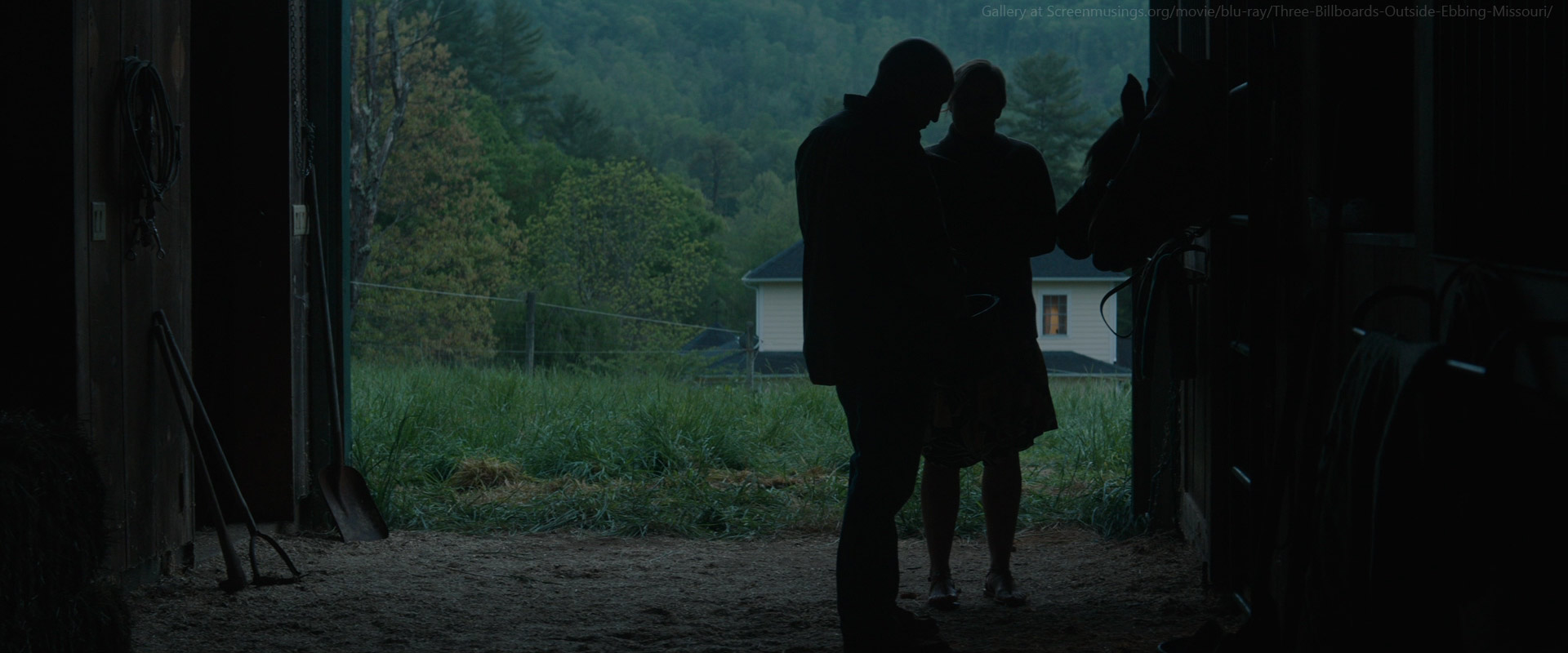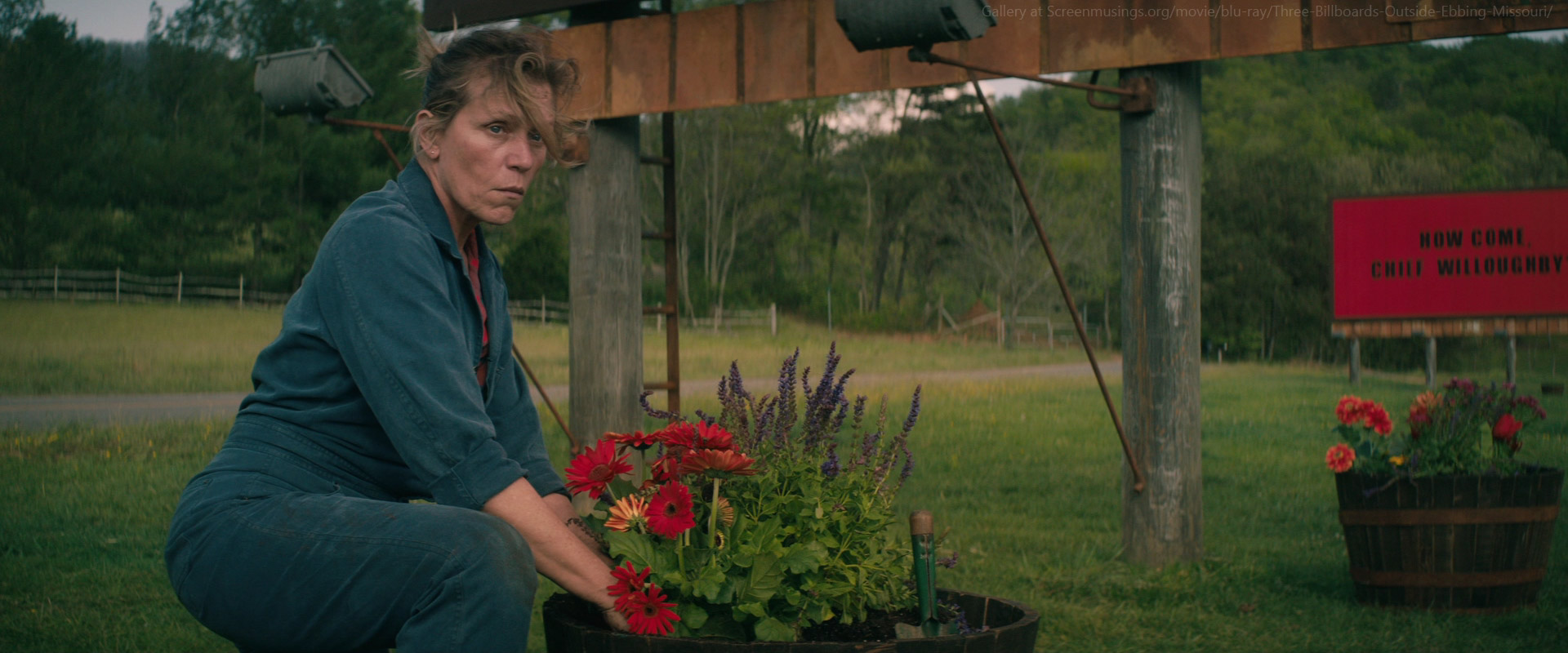Three Billboards Outside Ebbing Missouri - A Mother's Fury
Sometimes, a story comes along that just grabs hold of you, making you feel things deeply, and it sticks around in your thoughts long after you have seen it. "Three Billboards Outside Ebbing, Missouri," a film from 2017, is very much one of those experiences. It is a crime drama, a story about people, and a look at what happens when someone is pushed to their absolute limit. This particular movie was put together by Martin McDonagh, who not only wrote the words but also guided the actors and oversaw the whole making of it.
This film, you know, it centers on a woman named Mildred Hayes, brought to life by Frances McDormand, and her journey is quite something to witness. She lives in a town that is, well, Ebbing, Missouri, and her world has been turned upside down. The story starts after a terrible loss, and it shows you how a person might react when they feel like the world has failed them, or perhaps, in some respects, the system has. It is a truly rare sort of film that feels both very deep and also incredibly real, like something that could actually happen right down the street, if you get what I mean.
The film manages to be something that inspires you, yet it never tries to force that feeling on you, which is actually a pretty neat trick. It does not manipulate your feelings, but rather, it lets the raw human experience speak for itself. You see, the compelling story behind Frances McDormand's portrayal of Mildred Hayes reveals a really fascinating internal struggle, a kind of battle going on inside her heart and mind, and that is what draws you in, pretty much from the very start.
Table of Contents
- The Story That Unfolds in Three Billboards Outside Ebbing Missouri
- What Drives Mildred Hayes in Three Billboards Outside Ebbing Missouri?
- The Depth of Characters in Three Billboards Outside Ebbing Missouri
- How Does Dixon's Path Mirror Other Screen Figures?
- The Setting - Ebbing, Missouri, and Its Real-Life Connections
- Is Three Billboards Outside Ebbing Missouri a True Place?
- The Film's Impact and Its Public Welcome
- What Happens at the Close of Three Billboards Outside Ebbing Missouri?
The Story That Unfolds in Three Billboards Outside Ebbing Missouri
So, the film "Three Billboards Outside Ebbing, Missouri" tells the tale of a mother, Mildred Hayes, who is just consumed by sorrow and anger. Her daughter was taken from her in the most awful way, a crime involving violence and murder, and the people who are supposed to find the person responsible, the local police, have not, in her view, done enough. Months, you see, have passed, and there is still no one to point a finger at, no one to hold accountable for this terrible thing. This lack of progress, this long wait, really pushes Mildred to do something quite striking.
She decides to take a very bold step, a move that most people would probably never even think of. She goes out and rents three large signs, the kind you see by the side of the road, leading into her town. On these signs, she has a very strong, very direct, and frankly, a rather controversial message painted. This message is aimed squarely at the local police chief, a man named Bill Willoughby. It is, in a way, her way of shouting out her frustration, her deep, deep pain, for everyone to see, and to make sure that no one in Ebbing, Missouri, forgets what happened or that the case is still open.
The idea of using these public signs, these three billboards outside Ebbing, Missouri, to challenge authority like that is quite something. It shows just how desperate Mildred is, how utterly fed up she has become with the situation. It is not a quiet protest; it is loud and in your face, and it is meant to get a reaction, to stir things up. And stir things up, it certainly does, creating a lot of talk and, well, some trouble too, in the small community where everyone, more or less, knows everyone else.
- Dax Shepard
- Jeffrey Dahmer
- Cast Of It Ends With Us Film
- One Tree Hill Cast
- How Many Kids Does Nick Cannon Have
What Drives Mildred Hayes in Three Billboards Outside Ebbing Missouri?
Mildred Hayes, the person at the heart of "Three Billboards Outside Ebbing, Missouri," is, quite simply, a mother whose world has been shattered. What drives her, you might ask? It is a powerful mix of grief and a very raw, burning anger. She is a grieving mother, yes, but her grief is not quiet or hidden; it is a force that makes her act. The local police chief has not yet found the person who killed her daughter, and this failure, as she sees it, fuels her every action. She puts up these billboards, not just to remember her child, but to make a point, to call out the people she feels have let her down.
Her actions are a direct challenge, a way of saying, "You haven't done your job, and I'm going to make sure everyone knows it." This is a woman, you know, who has had enough, and she is not going to sit quietly while her daughter's case goes cold. The signs are her voice, her way of demanding justice when she feels like the official channels have failed her. It is a very personal kind of protest, born from a deep, deep sorrow and a refusal to let the matter drop, which is, in a way, understandable.
The strength of her feelings, her furious spirit, really comes through in Frances McDormand's portrayal. You can see the internal struggle, the mix of sorrow and determination, playing out in every scene. It is not just about finding a culprit; it is about a mother's relentless need for answers and for some sort of peace, even if that peace comes from making a lot of noise. She is, in a sense, a force of nature, driven by something so fundamental, so human, that you can't help but watch what she does next in "Three Billboards Outside Ebbing, Missouri."
The Depth of Characters in Three Billboards Outside Ebbing Missouri
"Three Billboards Outside Ebbing, Missouri" is not just about one person; it is about a whole collection of people, each with their own complex sides, which makes the story feel very rich. Besides Mildred, there are other figures who play important parts, like Caleb Landry Jones, Kerry Condon, and Sam Rockwell, who all bring a lot to the screen. These characters are not just there to fill a space; they have their own struggles, their own ways of dealing with the events that unfold around them. It is pretty interesting to see how everyone reacts to Mildred's very public display of anger.
One of the characters who really stands out is Dixon, played by Sam Rockwell. He is a police officer, and his journey throughout the film is, in some respects, one of the most surprising. He starts off in one place, with certain ideas and ways of behaving, and then, as things happen, he begins to change, or at least, you see different sides of him. His character, like many in the film, is not just one thing; he has layers, and sometimes those layers are quite difficult to sort through. It makes you think about people and how they can be, you know, a mix of things, good and not so good.
The way these people interact, the arguments they have, the small moments of connection, all of it adds to the feeling that you are watching real people in a real place, even though the town itself is, apparently, made up for the story. The film manages to show that everyone is dealing with something, and sometimes, the way they deal with it is messy, or difficult, but it is always, in a way, human. It is a film that really explores what makes people tick, and how they react when things get really tough, which is pretty compelling.
How Does Dixon's Path Mirror Other Screen Figures?
When you look at Dixon's portrayal in "Three Billboards Outside Ebbing, Missouri," there is a suggestion to compare his path to that of Danny Vinyard from "American History X." This comparison is quite interesting because it points to a kind of change, a sort of shift in how a person sees the world and acts within it. Dixon starts off as someone who is, well, not always easy to like, and he has some very rough edges, some ideas that are clearly not good. Yet, as the story progresses, you see moments where he starts to question things, or perhaps, he starts to show a different side of himself, a side that was hidden or buried.
Like Danny Vinyard, Dixon's story involves a kind of personal reckoning, a moment where he has to face who he has been and perhaps consider who he could be. It is not a simple change, or a quick one, but rather a slow unfolding of a person. These characters, in a way, show how people can be influenced by their surroundings, by their past, but also how they might, just might, be able to move in a different direction, or at least, have moments of clarity. It is about the potential for people to be more than just their worst actions, which is a pretty powerful idea.
The comparison suggests that both characters, in their own stories, go through something that challenges their core beliefs or their established ways of being. It is about the possibility of growth, or at least, a different kind of understanding. Dixon's journey in "Three Billboards Outside Ebbing, Missouri" is, in some respects, a very human one, filled with mistakes and moments of insight, and that is what makes him, like Danny Vinyard, a figure that stays with you after the credits roll, leaving you to think about his choices and what they mean.
The Setting - Ebbing, Missouri, and Its Real-Life Connections
The town where much of the story of "Three Billboards Outside Ebbing, Missouri" happens is, of course, Ebbing, Missouri. These billboards, the very ones that give the film its name, are placed on the outskirts of this community. They show a message that is, as we know, quite confrontational, aimed directly at the town's police chief, Bill Willoughby. The setting itself, this small town, feels very real, like a place you might drive through on a long trip, with its own rhythms and its own secrets, you know.
It is important to remember, though, that while the film feels very grounded in a specific place, the town of Ebbing, Missouri, is actually a fictional creation. Director Martin McDonagh, the person who made the film, explained this in an interview. He said that the crime itself, the idea of a real crime, and the presence of billboards are real inspirations, but the town of Ebbing itself is something he imagined. This choice to have a made-up town, while drawing from real elements, allows the story to feel universal, perhaps, rather than tied to one specific spot.
So, even though you might feel like you could look up Ebbing, Missouri, on a map, it is actually a place that exists only within the story of "Three Billboards Outside Ebbing, Missouri." This distinction is kind of interesting because it means the film can explore its themes of grief, anger, and justice without being bound by the actual history or specific details of a real community. It gives the creators a bit more freedom to tell the story they want to tell, while still making it feel incredibly authentic and, in a way, relatable to anyone, anywhere.
Is Three Billboards Outside Ebbing Missouri a True Place?
A question that often comes up when people see "Three Billboards Outside Ebbing, Missouri" is whether the town itself, Ebbing, Missouri, is a real spot on the map. And the straightforward answer is, no, it is not a real place. The director, Martin McDonagh, clarified this himself, saying that while the core idea of a crime and the striking image of billboards were inspired by real events he heard about, the specific town of Ebbing was created for the purposes of the film. So, if you were to try and find it on a map, you would, you know, come up empty.
This decision to invent the town allows the story of "Three Billboards Outside Ebbing, Missouri" to stand on its own, not needing to perfectly match any actual location. It means the focus can stay very much on the characters and their emotional struggles, rather than getting caught up in the details of a specific real-world community. It is a setting that feels authentic, even though it is a product of imagination, and that is a pretty clever trick for a storyteller to pull off, if you think about it.
So, while the feelings, the anger, the sorrow, and the push for justice in "Three Billboards Outside Ebbing, Missouri" feel very, very real, the actual backdrop, the town of Ebbing, is a fictional construct. It serves as a kind of stage for the very human drama that plays out, allowing the film to explore its big ideas about loss and accountability without being tied down to the specifics of a real place, which is, in some respects, quite effective for the kind of story they wanted to tell.
The Film's Impact and Its Public Welcome
"Three Billboards Outside Ebbing, Missouri" made quite a splash when it came out, getting a very warm welcome from people who watch and talk about films. It received what you might call the highest kind of praise, even earning a nomination for Best Picture at the Academy Awards. While it did not, in the end, take home that particular big award, the fact that it was nominated at all shows just how much it was thought of, how well it was received by those who judge these things. There was, you know, a real buzz around it, a lot of talk and discussion, which is always a good sign for a movie.
The film stood out because it managed to be both truly deep and also very down-to-earth, a combination that is not always easy to achieve. It connected with people because it explored very raw, very human emotions – grief, anger, a need for answers – in a way that felt honest. It was, in a way, inspirational, but it never felt like it was trying too hard to make you feel that way. It just let the story and the performances do the work, which is pretty much the best way to do it, if you ask me.
The public welcome for "Three Billboards Outside Ebbing, Missouri" was, therefore, very positive, showing that stories about ordinary people facing extraordinary circumstances, told with a lot of heart and a bit of grit, can really resonate. It proved that a film can tackle very difficult subjects and still be something that people want to see and talk about, making a lasting impression on those who experience it. It is one of those movies that really gets people thinking and talking, which is, you know, a sign of something special.
What Happens at the Close of Three Billboards Outside Ebbing Missouri?
At the very end of "Three Billboards Outside Ebbing, Missouri," we are left with a scene that is, in a way, both unsettling and thought-provoking. Mildred, the grieving mother, and Dixon, the police officer whose path has crossed hers in so many ways, are together in a car. They are traveling, heading somewhere, and that somewhere is Idaho. The reason for their trip is, well, quite serious: they are going there with the idea of perhaps finding and confronting a man they believe might be responsible for the terrible crime against Mildred's daughter. It is a very open ending, leaving a lot for you to consider.
The film does not give you a neat, tidy resolution. It does not show you whether they find this man, or what they do if they do find him, or what the consequences of their actions might be. Instead, it leaves you with this image of two very different people, brought together by a shared sense of purpose, driving towards an uncertain future. This kind of ending is, in some respects, very fitting for a film that deals with such complex emotions and such difficult questions about justice and vengeance. It does not offer easy answers, which is, you know,

Three-Billboards-Outside-Ebbing-Missouri-103

Three-Billboards-Outside-Ebbing-Missouri-038

Three-Billboards-Outside-Ebbing-Missouri-100